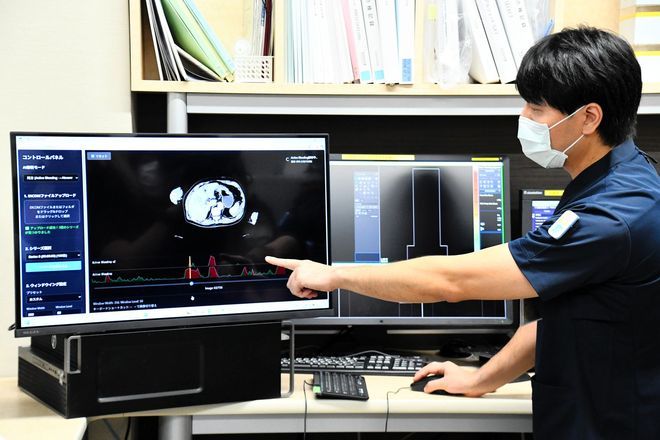OSAKA—A medical center here is testing the accuracy of an artificial intelligence system in instantly evaluating the seriousness of a patient’s external wounds.
The Osaka General Medical Center of the Osaka Prefectural Hospital Organization said it started conducting the clinical trial of the image diagnosis support system for trauma patients in September.
The equipment is expected to speed up diagnoses and improve examination accuracy in emergency situations.
The AI model, called the Emergency Room Automated Triage System (ERATS), was developed by a team of doctors, including Naoki Okada from the center’s advanced trauma and critical care center.
It can pinpoint abnormalities within an average of eight seconds based on hundreds or over 1,000 full-body CT images per patient.
The swiftness of the autonomous system may prove particularly helpful in saving the lives of patients suffering heavy blood loss.
Even skilled physicians need at least five minutes to accurately analyze full-body CT images, according to Okada. Frustrated doctors have said they “do not have enough time” in emergency situations and “might overlook something critical.”
With that in mind, Okada and his colleagues collaborated with 13 universities and medical institutions across Japan. They completed the AI system using 1.2 million CT images from 10,810 cases.
The process to manually mark each lesion one by one to train ERATS took around six years.
The AI assistant’s effectiveness will also be evaluated for verification at another medical center starting next fiscal year.
The ultimate goal is to make ERATS clinically available within a few years.
Emergency medicine has continued to struggle with the dearth of health care workers.
A central government survey on critical care centers nationwide showed that only three dedicated physicians are assigned to each facility at night on average.
About 60 percent of emergency hospitals had two or fewer doctors during the night hours, according to the survey.
Satoshi Fujimi, head of the advanced trauma and critical care center of the Osaka General Medical Center, said ERATS can help these institutions.
“An AI-based diagnostic assistance system will emerge as reliable at establishments with limited human resources,” Fujimi stressed.
Okada expects ERATS to help “raise the survival rate” for patients, particularly those with undetected lesions that result in delayed treatment.
“Our hope is rescuing patients who would otherwise not survive under the current framework,” Okada said.


AloJapan.com